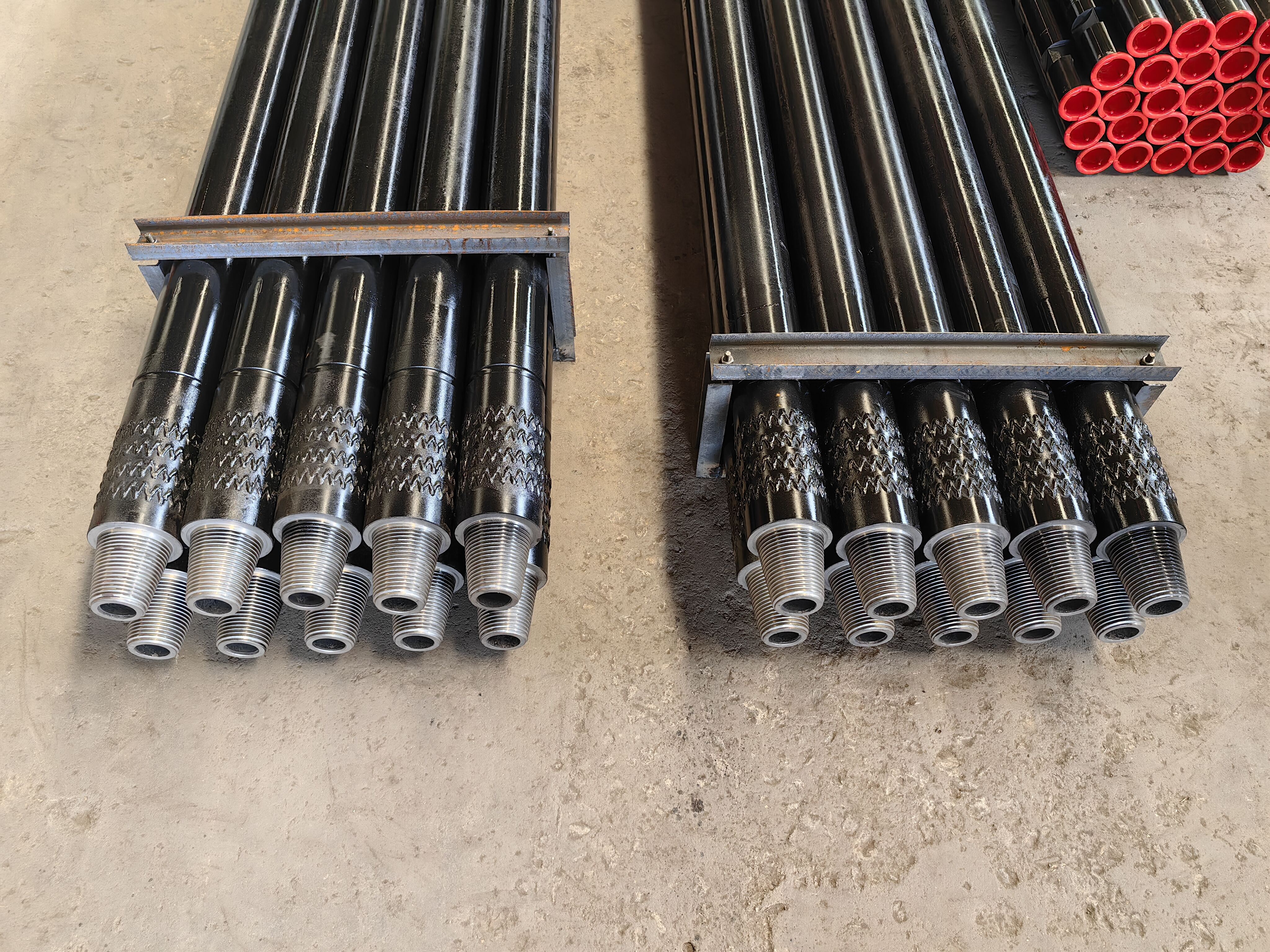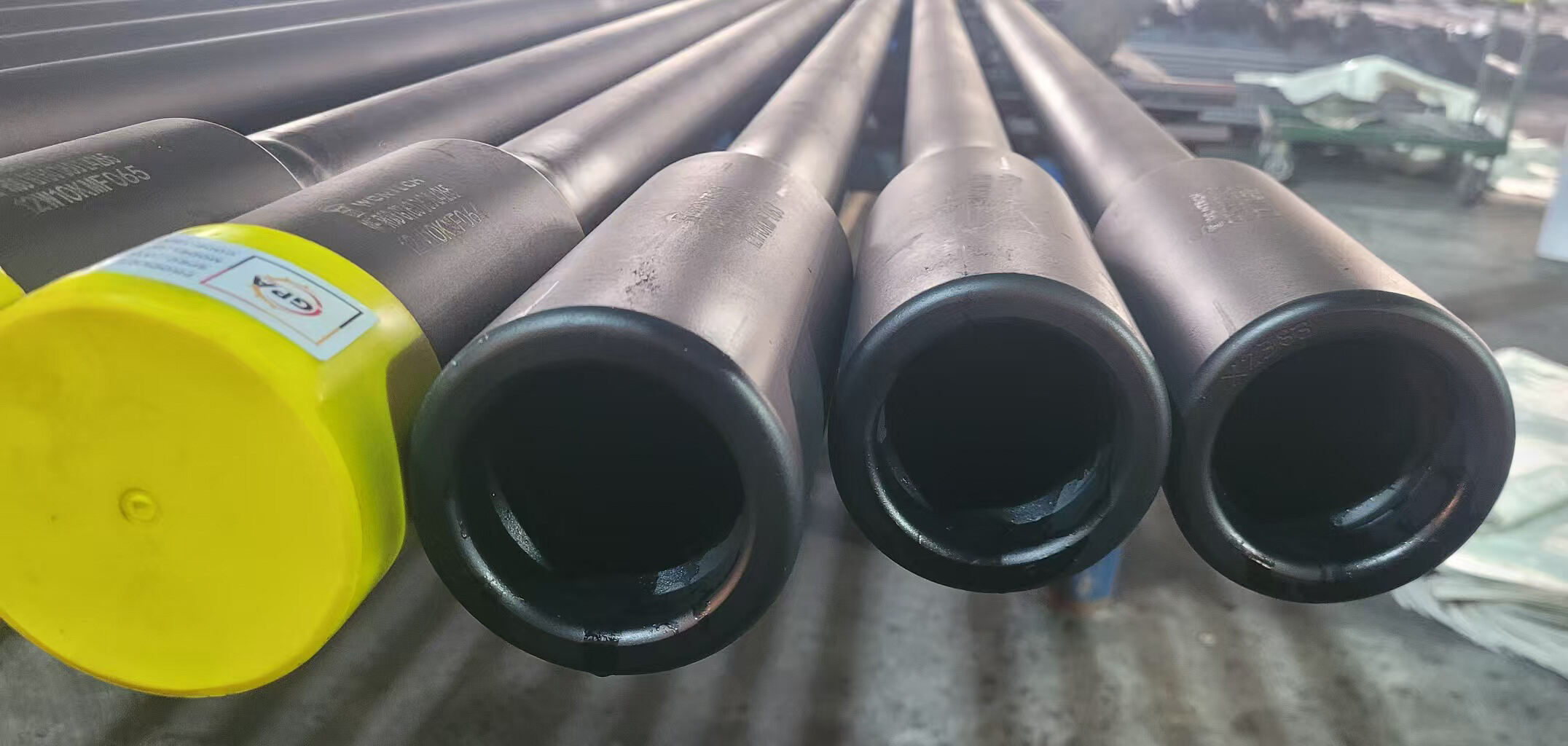Разбиране на критичните признаци на износване на буровите шайби
Надеждността и производителността на пробивните операции в голяма степен зависят от състоянието на струни за пробиване . Забелязването на признаците за износване на буровите тръби навреме може да означава разликата между успешна операция и скъпоструващ простои. Професионалните бурилщици знаят, че поддържането на цялостта на буровите тръби не е свързано само с предотвратяване на повреди – това е въпрос на оптимизиране на пробивната ефективност и защита на значителни инвестиции в оборудване.
Въпреки че буровите шайби са проектирани да бъдат издръжливи, те неизбежно се излагат на екстремни условия, които водят до износване. От абразивни формации до приложения с висок въртящ момент, тези съществени компоненти изпитват значително напрежение по време на експлоатацията си. Разбирането кога трябва да бъдат заменени изисква както опит, така и техническо познание.
Чести видове износване на бурови шайби
Външно износване на повърхността
Външната повърхност на буровите шайби често показва първите признаци на износване. Видими белези, драскотини и канали показват постоянно съприкосновение с абразивни материали. Когато тези модели станат изразени, те могат да застрашат структурната цялост на шайбата. Повърхностното износване обикновено започва като малки драскотини, но бързо може да се превърне в по-дълбоки канали, които ослабят цялостната структура.
Следете неравномерните модели на износване, особено около връзките. Тези зони изпитват по-големи концентрации на напрежение и са по-податливи на ускорено износване. Ако диаметърът на външната страна е намален с повече от 10% в сравнение с първоначалните спецификации, трябва незабавно да се направи подмяна.
Щипка и повреди на връзката
Резбованите връзки между буровите шайби са критични точки на износване, които изискват внимателен мониторинг. Признаци на износване на резбата включват заоблени или изравнени профили на резбата, белези от залепване и прекомерен ход при свързване или разкачване на шайбите. Тези проблеми често се дължат на неправилно боравене, недостатъчно смазване или неправилно подреждане по време на монтаж.
Износването на връзките става особено опасно, защото може да доведе до внезапно разделяне на шайбите по време на работа. Редовна проверка на резбата с помощта на специални калибри помага да се идентифицира износването, преди да достигне критични нива. Дори малки повреди по резбата могат бързо да се влошат под товар по време на бурене.

Показатели и оценка на вътрешното износване
Деградация на вътрешната стена
Вътрешният износ често остава незабелязан, докато не стане сериозен, което прави редовната инспекция критична. Вътрешната повърхност на шомполите може да изпитва значително износване вследствие на движението на течност и транспортирането на материали. Признаци за това включват вътрешно лющене, точкови корозии и намаляване на дебелината на стените. Използването на сонди и ултразвукови устройства за тестване позволява точно измерване на вътрешния износ.
Обърнете особено внимание на участъците, където се променя посоката на потока, тъй като именно там износът често се ускорява. Деградацията на вътрешното покритие също може да показва, че шомполът достига края на експлоатационния си срок. Съвременни методи за инспекция, като електромагнитни изпитвания, могат да разкрият скрити модели на вътрешен износ преди те да доведат до повреда.
Промени в структурната цялостност
Промените в структурните свойства на шомпола често се проявяват чрез дискретни признаци. Увеличена вибрация по време на работа, необичайни шумови модели и намалена ефективност на със забиването всички могат да показват вътрешни структурни проблеми. Редовното измерване на праволинейността и кръглостта на шомпола помага за идентифициране на развиващи се проблеми.
Напреднали методи за наблюдение, включително анализ на стресови вълни и изпитване на акустична емисия, могат да открият ранни признаци на умора или развитие на пукнатини. Тези методи се оказват особено ценни за предотвратяване на катастрофални повреди в критични приложения.
Превантивен сервиз и протоколи за инспекция
Редовен график на оценка
Внедряването на структурирана програма за инспекция значително удължава живота на шомполите. Ежедневни визуални проверки трябва да се фокусират върху очевидни признаци на износване, докато седмични подробни инспекции могат да проследяват напредването на износването. Месечни комплексни оценки трябва да включват както визуални, така и технологични методи за оценка.
Документирайте систематично всички наблюдения, като създадете история на износването за всеки шомпол. Тези данни помагат при прогнозирането на момента за подмяна и идентифицират модели, които може да сочат към оперативни проблеми, изискващи корекция. Поточното водене на записи също допринася за оптимизация на графиката за поддръжка и планирането на бюджета за подмяна.
Методи за измерване и документиране
Съвременните измервателни инструменти осигуряват прецизни данни за износването, които са съществени за вземането на обосновани решения. Цифрови шублери, резбови калибри и електронни измервателни устройства предоставят точни измервания на физическото износване. Документирането чрез снимки помага при проследяването на визуалните промени във времето, докато технологията за 3D сканиране може да създаде подробни карти на износването.
Въведете ясни протоколи за измерване и обучете персонала по надлежните техники за документиране. Единните методи за измерване гарантират надеждни данни за анализ на тенденциите и изчисляване на скоростта на износване. Тази информация е неоценима при определянето на оптималния момент за подмяна.
Определение на момента за подмяна и икономически съображения
Анализ на разходите и ползите
Решението за подмяна на буровите шипове включва балансиране на множество икономически фактори. Помислете не само за цената на подмяната, но и за евентуалното простоене, разходите за труд и риска от катастрофално повреждане. Подмяната на ранен етап може да изглежда скъпо, но често се оказва по-икономична от справянето с аварийни повреди.
Изчислете общата цена на собствеността, включително разходите за поддръжка, времето за инспекция и влиянието върху продуктивността. Включете разходите за евентуални повреди и тяхното влияние върху графиките на проектите. Този изчерпатен анализ помага да се обоснове решенията за подмяна пред ръководството и гарантира оптималното разпределяне на ресурсите.
Оценка на влиянието върху производителността
Износените бурови шипове значително засягат производителността и ефективността на буренето. Следете ключови показатели за производителност като скорост на проникване, консумация на гориво и обща продуктивност. Намалената производителност често показва напредващ износ, дори и преди да се появят видими признаци.
Следете тези показатели спрямо установените базови стойности, за да идентифицирате тенденции. Помислете за въздействието на продължителната експлоатация с износено оборудване върху други компоненти на системата. Често разходите от намалена ефективност надвишават разходите за своевременна подмяна.
Често задавани въпроси
Колко често трябва да се проверяват буровите шипове за износване?
Профессионалните бурови шипове трябва да се подлагат на ежедневни визуални проверки, седмични подробни проверки и месечни комплексни оценки с използване на специализирани измервателни инструменти. Честотата може да се увеличи въз основа на интензивността на използване и оперативните условия.
Какъв е типичният живот на буров шип?
Животът варира значително в зависимост от приложението, практиките за поддръжка и оперативните условия. При нормални условия, качествените бурови шипове обикновено изживяват между 800-1200 работни часа, въпреки че това може да бъде по-кратко в изключително абразивни условия или по-дълго при оптимална поддръжка.
Може ли износените бурови шипове да се възстановяват вместо да се подменят?
Докато лекото износване понякога може да се отстрани чрез възстановяване, сериозното износване обикновено изисква пълна замяна. Разходите и надеждността на възстановяването трябва внимателно да се преценят в сравнение с опциите за нови замени, като се вземат предвид изискванията за безопасност и производителност.
Какви са рисковете за безопасността при използването на износени бурови шайби?
Използването на износени бурови шайби увеличава риска от внезапни повреди, което може да доведе до повреди на оборудването, закъснения в проектите и сериозни рискове за безопасността. Потенциални рискове включват разделяне на шайбите, намалена структурна здравина и влошена прецизност на буренето.

